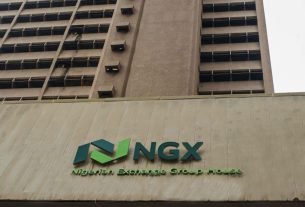What Ethereum Could Gain from an ETF Approval
According to Ilan Solot, Senior Global Markets Strategist at Marex Solutions, the SEC’s recent ruling positions Ethereum for success in a number of novel directions.
In the long run, Ethereum may find greater significance from the SEC’s recent approval of ETH ETFs than it did from Bitcoin. In the foreseeable future, it seems doubtful that Bitcoin’s dominance, niche, and value proposition as a store of value will be questioned. But until recently, Ethereum had much tougher competition and occasionally found it difficult to stand out among the stories of smart contract platforms.
It’s now known that two significant cryptocurrency assets are probably not in danger of being referred to as securities by US authorities. While many institutional investors will be influenced to consider using, building, and investing in chains, this may not signify much to individual retail investors, particularly those who are based outside of the United States.
This is Crypto Long & Short, a weekly newsletter for professional investors that offers news, analysis, and insights. To receive it in your inbox every Wednesday, sign up here.
At least for major projects, Ethereum will probably continue to lead developer activity in the blockchain sector. In comparison to all other chains, Ethereum (and the EVM chain in general) drew much more developers last year, according to Electric Capital’s Developer Report. Potential ETF capital inflows, easily accessible institutional routes such as Coinbase’s BASE L2, and this new validation could bolster its hegemony even more.
The Ethereum chain has a strong pipeline, comprising BlackRock’s BUIDL, Ethena, and EigenLayer, when seen from a project perspective. In a matter of months, Ethena synthetic dollar (USDe) alone accumulated a staggering $3 billion, which is the total market cap of all stablecoins on Solana.
This doesn’t imply that other chains won’t support significant cryptocurrency initiatives—quite the contrary. However, as of right now, only Ethereum contains protocols that have the experience and track record required for institutions to engage with significant financial resources. Consider Uniswap or AAVE, for instance.
Finally, an increase in the price of ETH might ignite the Ethereum DeFi economy and create a potent feedback cycle. As a basic illustration, consider the about $9 billion in ETH-linked collateral (amongst wETH, wstETH, and weETH) that is only on AAVE, in addition to the roughly $1 billion in L2s. Granted, a good portion of this collateral is probably not utilized for delta-neutral tactics like points farming and recursive lending.
An increase in the price of ETH and its collateral value can stimulate the cryptocurrency market. Increased spending, investment, and leverage are the results of wealth impacts. particularly if altcoins associated with ETH rise in value.
Though it’s too soon to tell, we may look back on this as the moment that Ethereum becomes the “Amazon” of the digital asset market. Even if they are still sustaining robust communities, additional smart contract layer 1s may be forced to become niche players (like “Etsys”) if the scenario plays out (which is still a large “if”). We may never know, but it’s unclear (at least to me) if this is the industry’s best course of action. Maybe a more harmonious multi-chain environment will increase adoption in the end. However, Ethereum dominance appears to be the most plausible at this point.
[hurrytimer id=”8420″]



